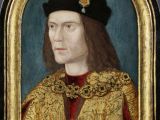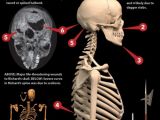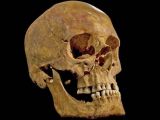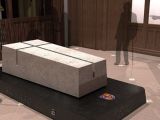Some time ago, in September 2012, archaeologists recovered a centuries-old skeleton from under a parking lot in Leicester, UK. A few months later, in February 2013, scientists announced that the skeleton belonged to King Richard III.
More precisely, they said that, having carried out a series of DNA tests, they found striking similarities between the person whose remains were found under the parking lot and both living and dead relatives of the late monarch.
In a paper published in yesterday's issue of the journal Nature Communications, the scientists behind this investigation detail their work and offer a new insight into King Richard III's life. The paper, authored by an international research team, is said to finally close this controversial forensic case.
Pinning down the origin of the skeletal remains
Dr. Turi King with the University of Leicester's Department of Genetics and fellow researchers explain that, to determine the identity of the individual found buried under the car park in Leicester, they first pulled DNA samples from the skeleton.
They then compared to genetic profile obtained in this manner to that of living and dead relatives of the late monarch. The researchers go on to detail that, looking not to leave any room for mistakes, they focused on several genetic markers.
Specifically, they paid close attention to the complete mitochondrial genomes, which are passed on through the maternal line, and the Y-chromosomal markers, which are inherited through paternal line.
Yes, this is science talk for peering into genetic particularities that come from each parent and that prove that two or more individuals are related to one another not through social conventions but because they share a common ancestor.
As already mentioned, information obtained with the help of these DNA tests indicates that the skeletal remains found in Leicester in September 2012 belong to King Richard III, who passed away in 1485, after being severely injured on the battlefield.
King Richard III had blond hair, blue eyes
Apart from confirming the identity of the skeleton, Dr. Turi King and colleagues found evidence that King Richard III had blond hair and blue eyes. The researchers say that this corresponds to how the monarch was depicted in historic documents and centuries-old paintings.
“With probably blond hair and almost certainly blue eyes Richard III looked most similar to his depiction in one of the earliest portraits of him that survived, that in the Society of Antiquaries in London,” reads a statement on the University of Leicester's website.
How King Richard III died
Historians say that, according to evidence at hand, the monarch past away in the aftermath of a battle against Henry Tudor. This battle was held at Bosworth Field and brought an end to the Wars of the Roses, i.e. dynastic wars between the houses of Lancaster and York for the throne of England.
The death of King Richard III as a result of severe injuries that he suffered on the battlefield translated into the House of Tudor's coming to reign over the country. Having lost this battle, Richard III was simply thrown in a grave that was too small for his body.
Researchers who have had the chance to examine the monarch's remains say that, during the 1845 battle at Bosworth Field, Richard III sustained a total of 11 injuries. Thus, his skeleton indicates that he was stabbed with a dagger, cut with a sword and poked at with a halberd.
Now that his remains have been recovered, they are to be reburied at the Leicester Cathedral in a ceremony scheduled to take place on March 26, 2015. The skeleton is to be laid to rest in a tomb made from a special type of fossil stone known as Swaledale
To learn more about this centuries-old forensic case and how it was solved, check out the video below.

 14 DAY TRIAL //
14 DAY TRIAL // 




